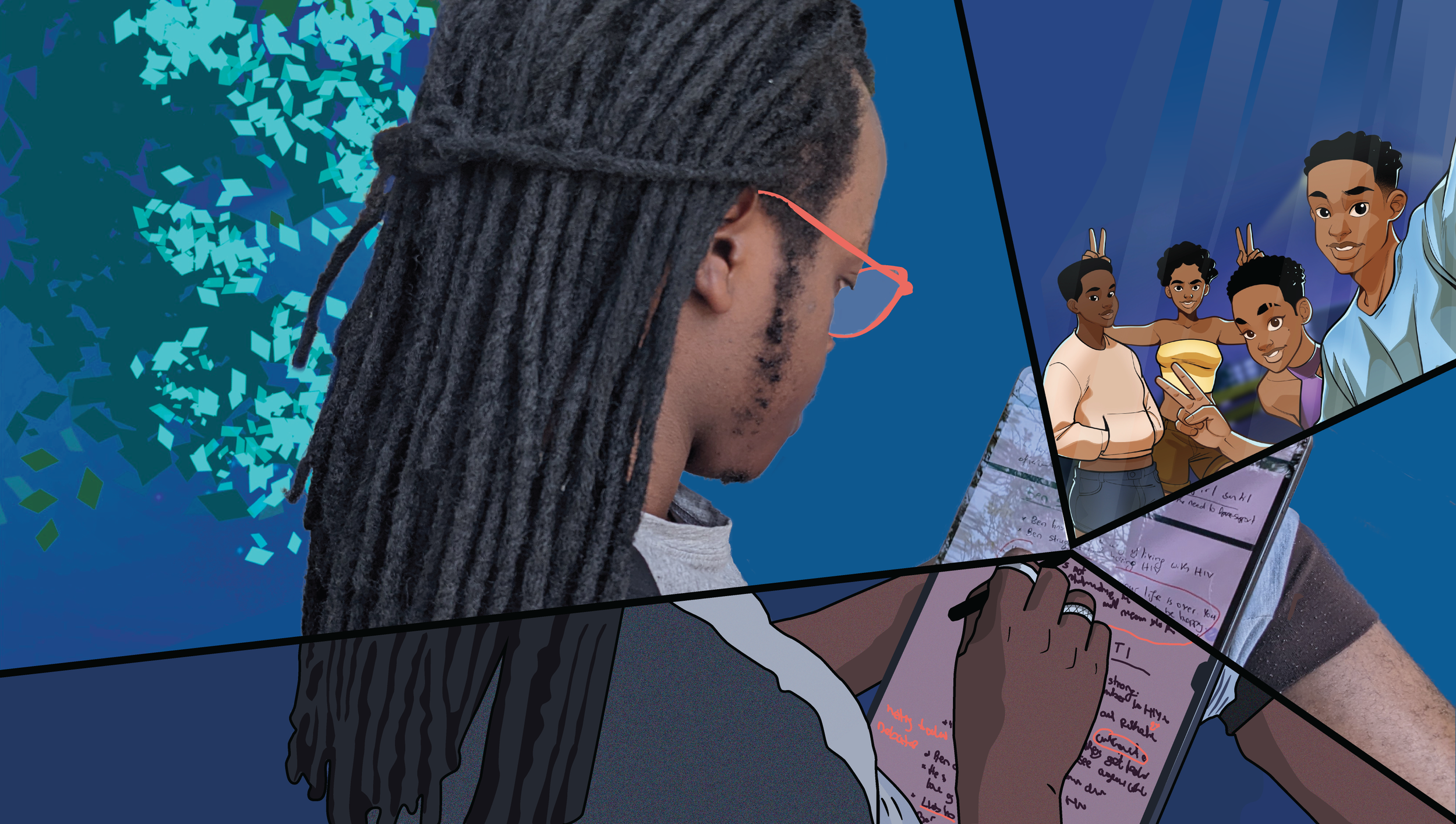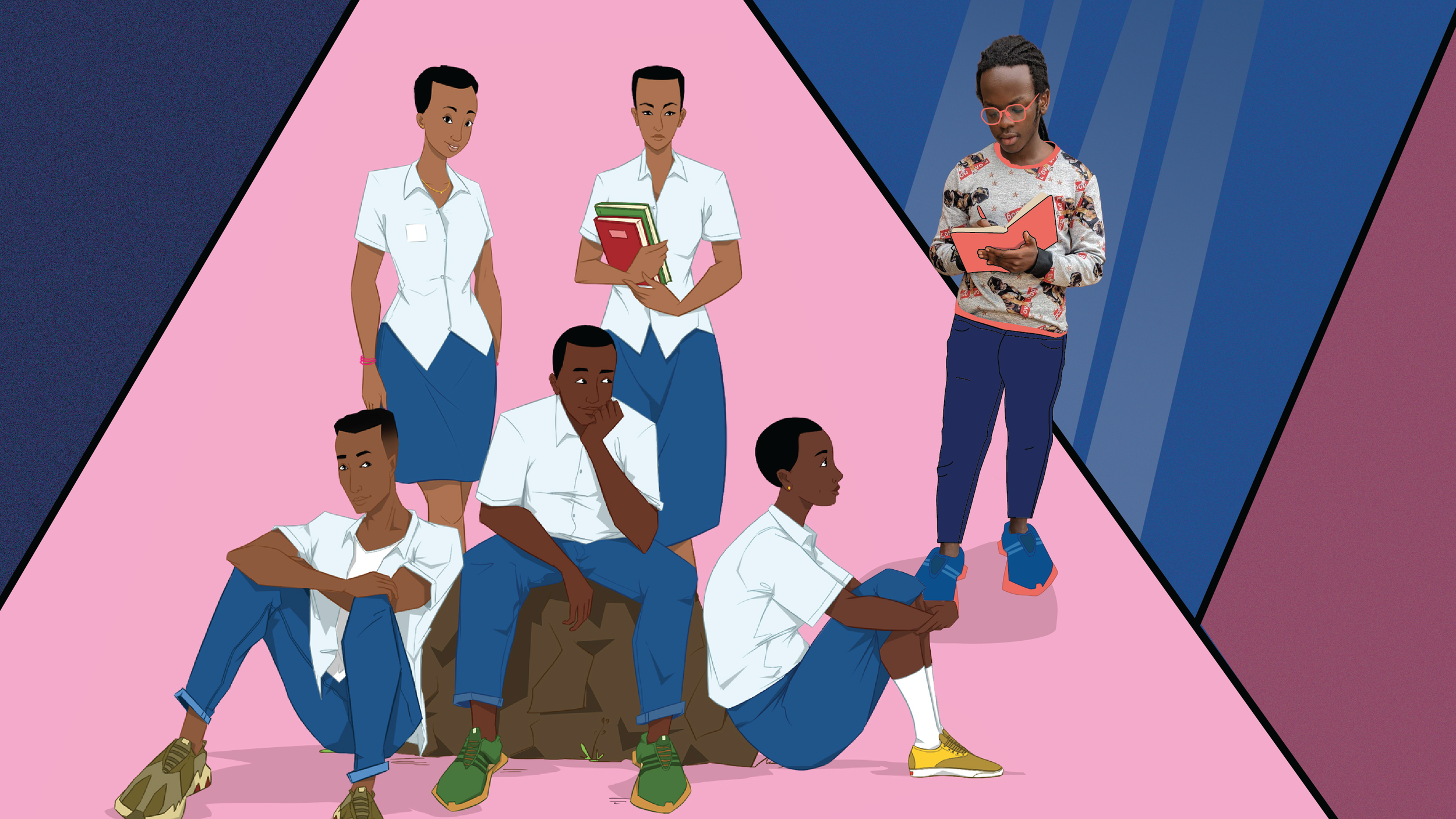Behind the Scenes: Creating Content with Youth
For a little over three years now, I’ve been leading the content creation for CyberRwanda, which is Rwanda’s first self-care digital platform to support youth through every step of their sexual and reproductive health (SRH) journey. The platform has three main features: the shop, story section, and learn section.
At the beginning, I was mostly writing webcomics. Unlike a typical comic, CyberRwanda’s stories are meant to encourage behavior change. To write these kinds of stories in a way that is impactful can be rather tricky, since you need to find a balance among centering youth voices (desires, pressing concerns, realities), writing an engaging story, providing detailed SRH information, and modeling the behavior you would like them to see.
I have now completed four seasons of stories. Here are a few things I wish I had known at the start:
Plan more time than you think to create stories
Writing these stories is not something you can do in a couple of months. It takes time, mostly because of the review process. All stories are reviewed by several U.S. and Rwandan government institutions, including experts in gender, behavior science, health, and sexual and reproductive health. This ensures the information is accurate, hits our targeted outcome, and correctly incorporates behavior change techniques.
I also conduct several youth validation sessions at every stage, where I workshop the content with young people to ensure it’s engaging, fun, and speaks to their priority questions and the realities of their lives. This process can take quite some time depending on the amount and depth of feedback I receive. All in all, creating one season of content – from writing to illustration – can take as long as 9-12 months.
Youth have a hunger for culturally relevant content
The story section of CyberRwanda is the most accessed part of the platform for a reason. In every single youth validation I have conducted, I always ask young people if they have seen or read a story similar to the one we are workshopping and the answer is always no. There is truly little-to-no content out there relevant for young people, especially content that explores topics like sexual and reproductive health in a way that is friendly and speaks to young people’s questions and realities.
For YLabs – and really any organization in this field – the lack of stories set in young people’s experiences presents a unique opportunity to make a meaningful impact. Not only are we aiming to improve young people’s health and livelihoods, but we also do so using a method proven to lead to behavior change through identification with characters, role modeling, and in a format that youth are missing: stories.
Stories alone aren’t enough – you need different kinds of content
Soon after we launched season one, it became clear that young people had finished the comics quickly and were looking for more content. But the challenge was/is that it takes a lot of time to create them. We then explored other types of content young people were looking for, and found that many of them were accessing the CyberRwanda platform in search of answers to specific SRH questions, support for emergency situations, and general information about SRH topics.
To that end, we designed a weekly advice column to meet the needs of youth who require responses to specific questions that are more in-depth, immediate, and personal. We also created static pages with detailed SRH content, animated videos, and linkage to relevant products. Incidentally, these required much less time to create compared to stories.
The result of this was an influx of hundreds of questions from young people that were not only answered weekly by our columnists, but also gave us further insights into the questions and concerns young people have. I was then able to integrate these topics into the stories to ensure their relevance. The static pages, on the other hand, allowed us to provide more in-depth content on SRH and other topics, something that can be tricky to accomplish through narrative stories.
Your turn…
Content comes in many formats: videos, blogs, stories, images, etc. No matter which type you are using to send your message, it is important to understand its limitations and figure out what other type(s) might best complement it. For CyberRwanda, it was critical that we engaged young people to see what kinds of content they preferred to consume and the challenges they faced in accessing it. From there, we created a platform that reflected their content preferences and where different formats complemented each other to build a space that is not only user-friendly, but conducive to learning and change.
Interested in our CyberRwanda project? Learn more!





